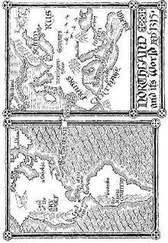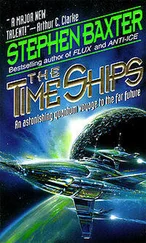Stephen Baxter
THE SCIENCE OF AVATAR
“What lab experience do you have?”
“I dissected a frog once.”
—Dr. Grace Augustine and Jake Sully
This book is about the science behind James Cameron’s movie Avatar . And to explore that science we’ll access behind-the-scenes secrets of James Cameron and his team.
But an awful lot of the science in Avatar is right up there on the movie screen. All you have to do is observe it.
Imagine it’s the year 2154, and you’re on Pandora, moon of the gas giant Polyphemus, planet of Alpha Centauri. You are following combat veteran Jake Sully down the ramp from the Valkyrie shuttle that has just brought you down from the orbiting starship Venture Star . You are at Hell’s Gate, the main operating base of RDA—the Resources Development Administration—which is here to mine this world for the supremely valuable “unobtanium.” Jake, though, is to report to Dr. Grace Augustine, to take part in the “avatar” programme she heads: his mind will drive a surrogate body intended to make contact with the Na’vi, natives of this world.
But you’re not thinking about any of this just now. You’ve just arrived, on an alien world. What do you see? What can you hear, smell, feel?
Actually, as you have your exopack mask glued to your face, all you can smell is canned air. Perhaps the sky is an odd colour, due to Pandora’s subtly different mix of atmospheric gases. Maybe there are funny-shaped clouds. You could hardly miss the two suns of Alpha Centauri, and that big old Jupiter-like world hanging in the sky. You might see little of Pandora’s native life, which has been pretty much excluded from Hell’s Gate.
You notice an odd feeling of lightness: a bounce in your step, a feeling that your head is full, like having a cold, a peculiar looseness in your internal organs. If you’ve trained on the smaller worlds of the solar system, the moon and Mars, you recognise these sensations; it was similar there. What you’re feeling is Pandora’s low gravity.
But then a huge mining truck roars past—and, with Jake, you see arrows sticking out of a tyre.
This is Jake’s very first observation of the Na’vi, the natives of Pandora. And this alone tells him, and you, a great deal about them.
To begin with, the Na’vi must be smart, with cognitive skills at least similar to modern humans’. Even an arrow—with a shaft, a head, some kind of flight—is a multi-part tool. On Earth, only humans have ever made such things, as far as we know, not the chimps, none of our hominid forebears with their chipped stone tools. Another proof of smartness is the fact that the Na’vi evidently targeted the tyres, which look like the vehicle’s weak point.
But how did the arrows get there? You already know that the Na’vi have a roughly humanoid form. You saw avatar bodies being grown in tanks aboard the starship from Earth. And given that, you might speculate (correctly) that a bow was used to fire those arrows. But you’re on another planet. How likely is it that an alien life form would develop a bow-and-arrow technology?
Well, on Earth, bow-and-arrow technology was independently invented several times. It seems to have emerged first by 8000 B.C. in Germany, but was separately developed by North American natives, who had no contact with the Old World between around 11,000 B.C. and the arrival of Columbus. The isolation of the continents has provided us with natural laboratories to study cultural evolution. Many things were invented independently, such as farming, wherever the local resources made them possible. Archery is one of these—although it didn’t always occur. The Aborigines of Australia never developed it; instead they used a throwing stick, like the South American atlatl, that they called a “woomera”—a word later adopted for the Australian space launch centre.
So it’s not a great surprise for you to discover the Na’vi using archery, after another independent invention, on another world entirely.
And nor might you be surprised to hear Jake being told by Colonel Miles Quaritch of SecOps, head of security at Hell’s Gate, that the Na’vi like to dip their arrows in a “neurotoxin” poison. The South American Indians similarly fought back against the Spanish conquistadors with arrows and darts coated with deadly frog slime, strychnine, and curare, an alkaloid that causes fatal paralysis.
But, of course, the first thing ex-Marine Jake will have noticed is that the Na’vi are evidently hostile. Just like the Spanish on Earth in pursuit of gold, the twenty-second-century conquistadors of RDA, here in pursuit of unobtanium, have come face to face with hunter-gatherers of the forest.
All this Jake, and you, could deduce just from that very first observation on Pandora, of arrows in the tyres.
Audiences around the world have been enchanted by James Cameron’s visionary movie Avatar , with its glimpse of the Na’vi on their marvellous world Pandora. And, like Jake Sully in his psionic link unit, many haven’t wanted to wake up from the dream: “ Avatar withdrawal” has become a common syndrome.
But the movie is not entirely a dream, not entirely fantasy. There is a scientific rationale for much of what we saw on the screen. This isn’t a surprise, as the creators consulted specialists and used their own scientific knowledge to make it so. Take archery, for example. The movie’s designers have given the Na’vi no less than four kinds of arrows and seven kinds of bow, ranging from children’s practice toys to the mighty “X-bow” with two crossed supports, for use at long range in aerial attacks. And Jake will discover that the bows are integral to Na’vi culture; after completion of the Iknimaya initiation trial a young Na’vi hunter is allowed to carve a bow from a branch of Hometree, the clan’s mighty natural home.
Behind what we see onscreen is a fully realised, if imaginary, universe. Much of this we don’t even glimpse, but it all adds to the authenticity of the movie’s vision, and to its cultural value. My own career has been (mostly) built on what’s known as “hard” science fiction: that is, science fiction in which you try to stick to the laws of science as we understand them, with reasonable extrapolations and consistency. The appeal of the best hard science fiction is that it allows us to explore the meaning of our own humanity in the context of the universe revealed by our endlessly unfolding scientific knowledge. And that’s just how it is with Avatar .
Like Jake wondering about the arrows, like Dr. Grace Augustine in her endless quest for “samples,” in this book we will be field explorers of the science of the fictional Avatar universe. We’ll take our lead primarily from what we see onscreen, but we will dip into the rich universe James Cameron and his team have developed behind the scenes. In places you’ll find me speculating about some feature of the Avatar universe without giving a definitive answer. At the time of writing only the first movie has been released; two sequels and tie-in novels are planned, in which we will learn much more about the worlds of Avatar …
This is a book about science, but we will always have to be aware that we’re dealing with a movie: a story, a piece of fiction. James Cameron wrote a first treatment of the movie in 1995, but his vision of the Na’vi, for instance, dates back to paintings he created in the 1970s. His development of the universe of Avatar was a dialogue between this primary visions and the work of artists, designers and consultants, who were encouraged to use real-world scientific knowledge and imagery to flesh out a consistent, credible universe. But at all times the need of the audience was paramount. Cameron urged his creators to “find the metaphor” for each element of the movie. Thus the banshees’ “metaphor” is an ultimate vision of birds of prey.
Читать дальше











